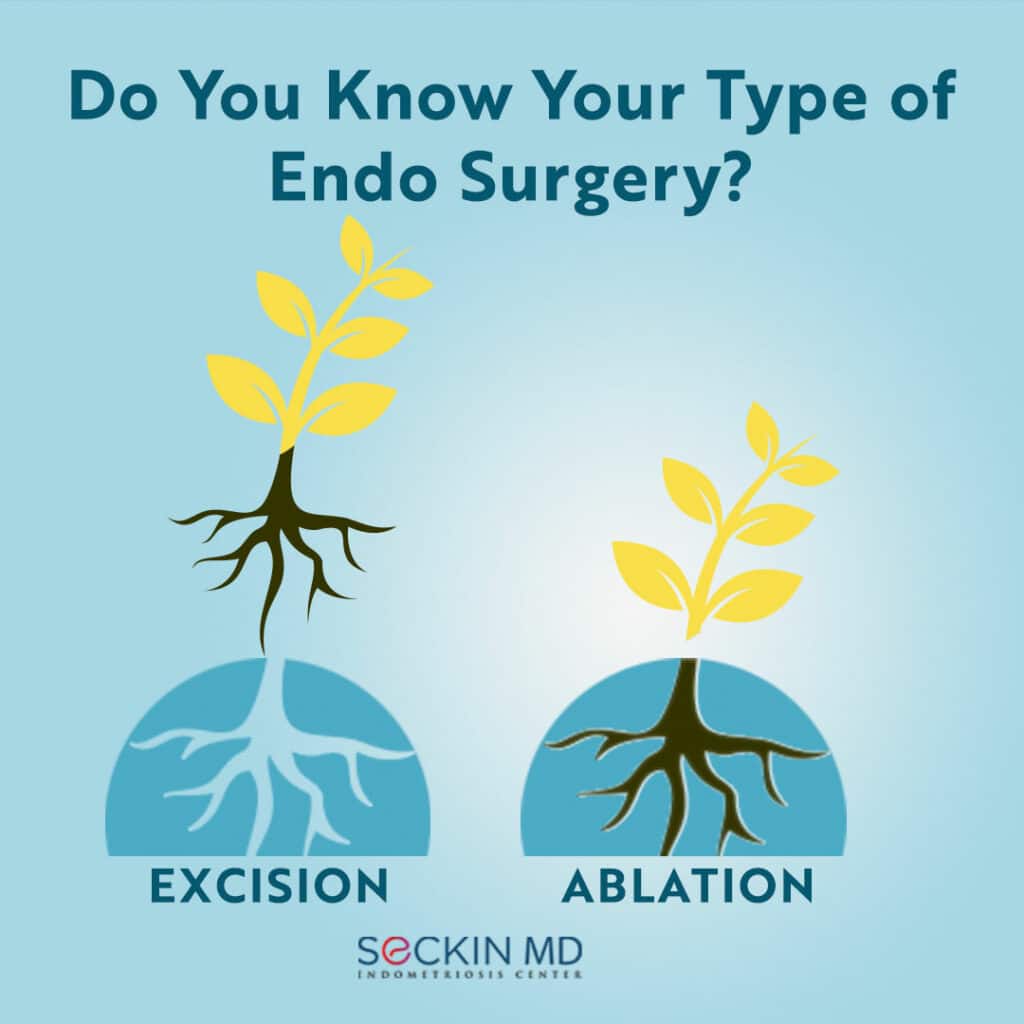Do You Know Your Type of Endo Surgery?
Surgery is the best option for endometriosis as it allows for the complete removal of endometrial lesions. This is important as these lesions grow outside the uterine cavity and conventional methods such as hysterectomy (removal of the uterus) or oophorectomy (removal of the ovary/ovaries) alone cannot fully treat the disease. But do you know about the different types of endo surgery?

Did your doctor recommend endo surgery?
Even today, despite advances in our understanding, endometriosis is often fraught with misdiagnosis. These are several steps that can lead to a conclusive diagnosis of endometriosis. These include a pelvic exam, imaging studies, and finally laparoscopy followed by a histological examination. You could consider yourself in good hands if your doctor confirms endometriosis in this manner.
However, doctors have their personal preferences for surgical techniques depending on their comfort and expertise. Therefore, it is essential to know which type of endo surgery they are recommending and what are the pros and cons of each technique.
Laser ablation: quick but highly disadvantageous
Ablation of endometriosis lesions can be performed using electricity, radio frequencies, low temperatures (cryoablation), microwaves, heated fluids (hydrothermal), and balloon therapy (balloon filled with heated fluid).
Laser ablation, also known as fulguration or cauterization, refers to the method of using heat from a laser to destroy endometriosis lesions. Once they identify the lesions, the surgeon can use laser ablation to quickly vaporize visible lesions. This technique requires relatively less expertise, and some surgeons, therefore, prefer it.
Carbon dioxide (CO2) laser is quite precise in cutting the tissue and can help separate the lesion from surrounding healthy tissue. Compared to other techniques, the laser helps minimize adhesions and reduce bleeding.
However, laser ablation comes with some pressing disadvantages. For example, it can destroy the lesion itself rendering it useless for further histological examination. Thus, it hinders a proper diagnostic confirmation of endometriosis.
Dr. Seckin often compares endometriosis to an iceberg wherein the lesion is just the visible tip of the iceberg with a large portion of it hiding beneath the peritoneal layers. Laser ablation only removes the visible portion of the lesion while the remainder stays hidden inside the peritoneum. This is the reason why recurrence rates of endometriosis symptoms after laser ablation can be as high as 40% to 60%.
It is also important to remember that endometriosis can also occur in areas outside the pelvic cavity. Not all tissues in these areas are amenable to the cauterizing effects of the laser. For example, the laser is not recommended while operating on ovarian endometriomas as it can damage ovarian tissue containing eggs
Laparoscopic deep excision surgery: a more thorough option
Laparoscopic deep excision is currently considered the ‘gold standard’ in endometriosis treatment. Excision surgery does not involve the use of a laser and helps preserve and restore the anatomy, which endometriosis often adversely affects.
Endometriosis can also manifest in extra-pelvic areas like the kidneys, bowels, and even thorax. Excision surgery helps in the effective removal of endometriosis lesions from these organs that laser ablation can potentially damage.
Laparoscopic deep excision surgery requires considerable skill and expertise. At Seckin Endometriosis Center, we enhance conventional laparoscopic methods with our own innovations to ensure lasting symptom relief.
We perform all surgeries in a minimally invasive manner to reduce scarring and improve patient recovery times. We use a cold excision technique that does not involve any form of heat or electricity. The obvious benefit of cold excision is that surrounding healthy tissue is unaffected. The other advantage is that it helps the surgeon utilize the excised sample to reach a definitive diagnosis.
Additionally, we use our patented Aqua Blue Contrast (ABC) technique for enhanced visualization against the laparoscopic glare. ABC helps mark the lesions in a distinct blue color, which alleviates the problem of missing lesions due to poor visibility.
Lately, robotic-assisted laparoscopic surgery has been gaining ground owing to the advantage it offers in making precise incisions. However, the use of robotic arms means that the surgeon has no haptic feedback of the tissue, which makes it difficult to assess the extent of scarring, adhesions, and invasion of the lesion.
Which endo surgery is best for you?
Without a doubt, laparoscopic deep excision surgery is our preferred method of the two options due to its advantages in preserving fertility and improving symptom relief while reducing recovery times. The only catch is that finding expertise in such a nuanced technique can be challenging.
Did you know about the different types of endometriosis surgery? Please do not hesitate to leave a comment on our post on Facebook or Instagram.
Get a Second Opinion
Our endometriosis specialists are dedicated to providing patients with expert care. Whether you have been diagnosed or are looking to find a doctor, they are ready to help.Our office is located on 872 Fifth Avenue New York, NY 10065.
You may call us at (646) 960-3080 or have your case reviewed by clicking here.